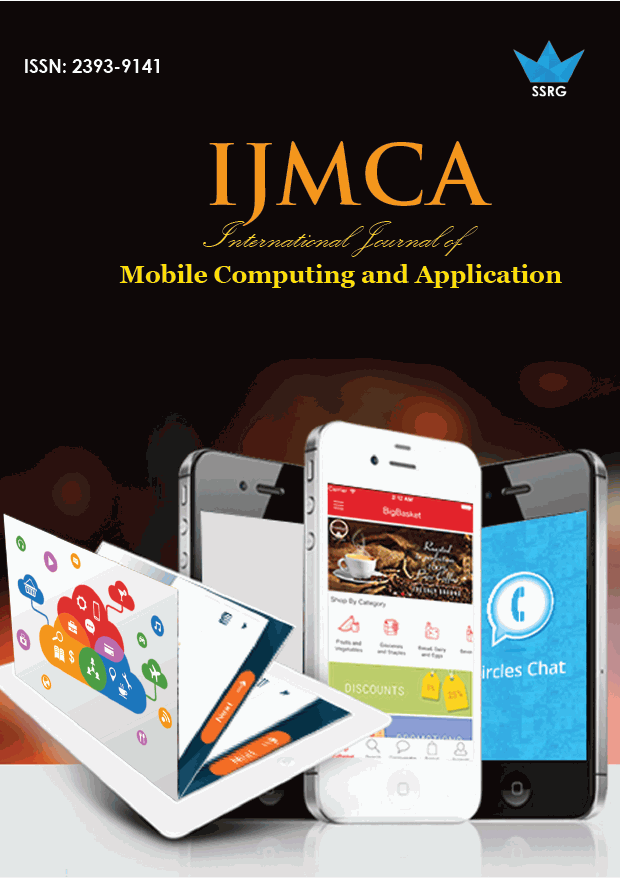No-Code Approach for Creating Virtual Stands for Professional Research

| International Journal of Mobile Computing and Application |
| © 2023 by SSRG - IJMCA Journal |
| Volume 10 Issue 2 |
| Year of Publication : 2023 |
| Authors : Arman A. Hovhannisyan |
How to Cite?
Arman A. Hovhannisyan, "No-Code Approach for Creating Virtual Stands for Professional Research," SSRG International Journal of Mobile Computing and Application, vol. 10, no. 2, pp. 1-5, 2023. Crossref, https://doi.org/10.14445/23939141/IJMCA-V10I2P101
Abstract:
Virtual reality (VR) is the computer-generated simulation of an environment that can be explored and manipulated in 360 degrees using special VR equipment. It is of great interest in educational institutions because of the possibilities it enables and the novelty of the technology. However, there are still obstacles to large-scale deployment of this technology, such as a lack of customization and flexibility. This paper presents a new approach to enhancing the use of virtual reality technology in education and research. The main goal is to help specialists with no programming knowledge construct new laboratory stands. The approach considers that real-life laboratory stands are decomposed into atomic components, and programmers create analogs for these components in the virtual environment. Later on, an intuitive and user-friendly virtual environment is provided, where no programming knowledge is needed to combine the virtual components into a laboratory stand. Using this approach, new virtual components can be continuously developed to cover more and more education fields.
Keywords:
Immersive learning, No-code platform, Virtual laboratory, Virtual reality, Software.
References:
[1] Carolina Cruz-Neira, Daniel J Sandin, and Thomas Albert DeFanti, “Surround-screen Projection-Based Virtual Reality: The Design and Implementation of the CAVE,” Proceedings of the 20th annual conference on Computer graphics and interactive techniques (SIGGRAPH '93), pp. 135-142, 1993.
[CrossRef] [Google Scholar] [Publisher Link]
[2] The Wikipedia website, 2023. [Online]. Available: https://en.wikipedia.org/wiki/Virtual_reality
[3] Abdul-Hadi G. Abulrub, Alex N. Attridge, Mark A. Williams, “Virtual Reality in Engineering Education: The Future of Creative Learning,” IEEE Global Engineering Education Conference (EDUCON), pp.751-757, 2011.
[CrossRef] [Google Scholar] [Publisher Link]
[4] Mingshao Zhang et al., “Recent Developments in Game-Based Virtual Reality Educational Laboratories Using the Microsoft Kinect,” International Journal of Emerging Technologies in Learning, vol. 13, no. 1, pp. 138-159, 2018.
[CrossRef] [Google Scholar] [Publisher Link]
[5] Guido Makransky, Gustav B. Petersen, and Sara Klingenberg, “Can an Immersive Virtual Reality Simulation Increase Students’ Interest and Career Aspirations in Science?,” British Journal of Educational Technology, vol. 51, no. 6, pp. 2079-2097, 2020.
[CrossRef] [Google Scholar] [Publisher Link]
[6] Ilana Dubovi, Sharona T. Levy, and Efrat Dagan, “Now I know how! The Learning Process of Medication Administration Among Nursing Students with Non-Immersive Desktop Virtual Reality Simulation,” Computers & Education, vol. 113, pp. 16-27, 2017.
[CrossRef] [Google Scholar] [Publisher Link]
[7] The Learnsci website, 2023. [Online]. Available: https://www.learnsci.com/company/about-learnsci
[8] The Labster website, 2023. [Online]. Available: https://www.labster.com/about
[9] The Praxilabs website, 2023. [Online]. Available: https://praxilabs.com/en/about-us
[10] Kareem Mohamed, and Shema Bukhari, “The Media in Metaverse; Baudrillard’s Simulacra, Is Metaverse that Begins the Apocalypse?,” SSRG International Journal of Communication and Media Science, vol. 10, no. 1, pp. 14-22, 2023.
[CrossRef] [Google Scholar] [Publisher Link]
[11] Josen Daniel O. De Leon et al., “Genesys: A Virtual Reality Scene Builder,” IEEE Region 10 Conference (TENCON), pp. 3708-3711, 2016.
[CrossRef] [Google Scholar] [Publisher Link]
[12] Otso Pietikäinen et al., “VRChem: A Virtual Reality Molecular Builder,” MDPI Applied Sciences, vol. 11, no. 22, p. 10767, 2021.
[CrossRef] [Google Scholar] [Publisher Link]
[13] Kholoud Najeh Alharbi, and Omar Ghazi Baker, “Concept Analysis Paper: Simulation in Nursing Education,” SSRG International Journal of Nursing and Health Science, vol. 5, no. 3, pp. 34-38, 2019.
[CrossRef] [Publisher Link]
[14] Blair Maclntyre, and Trevor F. Smith, “Thoughts on the Future of WebXR and the Immersive Web,” IEEE International Symposium on Mixed and Augmented Reality Adjunct (ISMAR-Adjunct), pp. 338-342, 2018.
[CrossRef] [Google Scholar] [Publisher Link]
[15] S.Kalpakha, G.Kalaiselvan, and T.Aravindh Krishna, “Innovative Digital Customer Engagement and Experience in Car Retail using Augmented and Virtual Reality,” SSRG International Journal of Computer Science and Engineering, vol. 5, no. 12, pp. 18-23, 2018.
[CrossRef] [Publisher Link]
[16] Arman A. Hovhannisyan, “Implementation of Immersive Virtual Hands Using Virtual Reality System Controllers,” SSRG International Journal of Engineering Trends and Technology, vol. 71, no. 6, pp. 369-374, 2023.
[CrossRef] [Publisher Link]
[17] Ning Nan, and Donald E. Harter, “Impact of Budget and Schedule Pressure on Software Development Cycle Time and Effort,” IEEE Transactions on Software Engineering, vol. 35, no. 5, pp. 624-637, 2009.
[CrossRef] [Google Scholar] [Publisher Link]
[18] Pascalis Trentsios, Mario Wolf, and Sulamith Frerich, “Remote Lab meets Virtual Reality – Enabling Immersive Access to High Tech Laboratories from Afar,” Procedia Manufacturing, vol. 43, pp. 25-31, 2020.
[CrossRef] [Google Scholar] [Publisher Link]
[19] Valentin Schwind et al., “These are not My Hands!”: Effect of Gender on the Perception of Avatar Hands in Virtual Reality,” Proceedings of the 2017 CHI Conference on Human Factors in Computing Systems (CHI '17), pp. 1577-1582, 2017.
[CrossRef] [Google Scholar] [Publisher Link]

 10.14445/23939141/IJMCA-V10I2P101
10.14445/23939141/IJMCA-V10I2P101